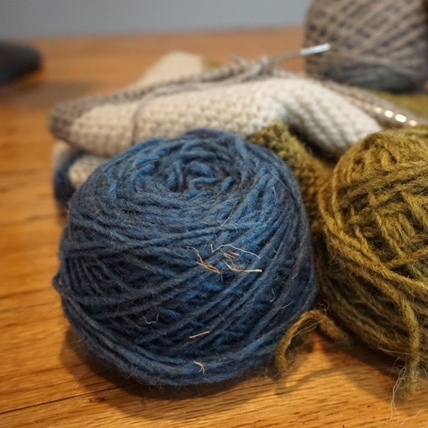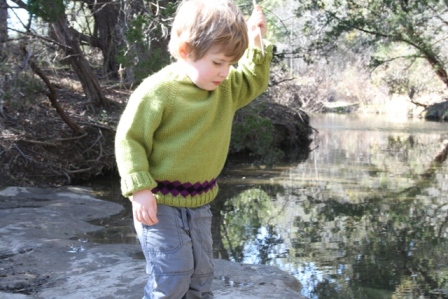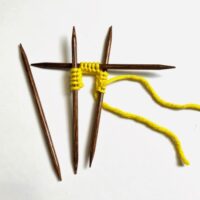Casey’s website is kcknits.com.
To get your knitting question on the show, just email it to podcast@verypink.com.
Videos we mention in this episode:
Alternating Hand-Dyed Yarns
Winding Yarn into Two Equally Sized Balls
“Find Your Needle” video series on the Knitter’s Pride YouTube channel
German Short Rows
Stellar Swatching
Removing a Bind-Off Row






For what it’s worth…
A couple pieces of info I’ve picked up over 34 years of spinning regarding plant matter (PM) in yarn.
1) The amount of PM in the fleece is a function of where the sheep were pastured and/or barn fed and when they are shorn. Some PM is more likely to “stick” in the fleece than others so, generally, the more “grass like” plants in the pasture the better. Once they are barned and fed there, the chances of their food (also PM) in each other’s fleeces greatly increases. They are sloppy eaters and will reach and drag their meals over each other.
2) This is where the shearing part comes in. If they can be shorn after they are clean pastured and before they are barn fed for any extended time, you get a very clean fleece. I get my fleeces from someone who raises sheep specifically for hand spinners (in central NY state). She shears the first weekend in December each year and my fleeces rarely have more than a handful of PM in an entire 7-10 lb fleece.
3) Any PM that does get through usually drops out during the picking (pre-wash process of opening the locks) or carding (post wash) processing. In more commercial settings, they also pick and card the fleeces but may also treat them chemically during the cleaning process in an attempt to disolve the PM. More PM = more chemical processing. It works but can also be pretty harsh on the fiber itself. Less PM = a more costly fleece to produce but a much better end product.
4) Once the fiber that still contains PM is spun into yarn it is pretty much there until someone manually picks it out.
5) PM can attract “tiny livestock.” PM=food. Never a good thing!
Thank you!
Sheep can also be ‘jacketed’ to keep the fleece clean – I have no idea how this feels for the sheep (too warm?) but it does keep the fleece clean. Here’s a farm that jackets their sheep, with good photos (randomly picked from the web, I don’t personally know this farm and have not used their wool so this is not an endorsement).
https://willowcreekfarm.wordpress.com/2014/08/05/jacketing-wool-sheep/
We’ve had the bind off question happen at our local store.
If you have four times the length of your row you will have more than enough to bind off. So if you have 40 inches of yarn left and your work is 10 inches wide, you have more than enough.
Just listening, a bit behind. In answering the question about the 16 inch needles for socks, Stacy said it must be meant for hats, that DPNs, 9 inch out magic loop are for socks. I have to chime in and say having used all the above, I have settled in on 2-26 inch needles for socks for a couple of years now. Using two needles is faster that the DPNs, less moving around than magic loop, and most of all when I shove them in my purse the stitches stay put!
I haven’t tried the new set of 3 needles that are meant for this style, I can’t recall what they are called, but they are 3 short circulars.
Addi Flexi Flips!! Those are the new needles meant for that purpose I mentioned.
Thank you ladies for the great podcast!!
Addi Flexi Flips!! Those are the new needles meant for that purpose I mentioned.
Thank you ladies for the great podcast!!